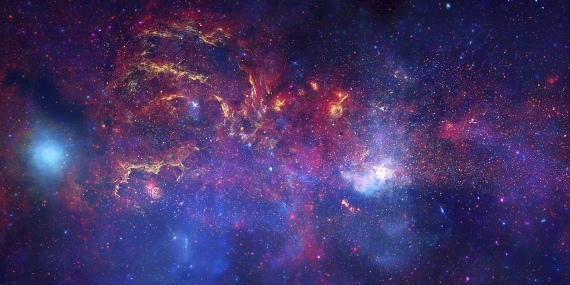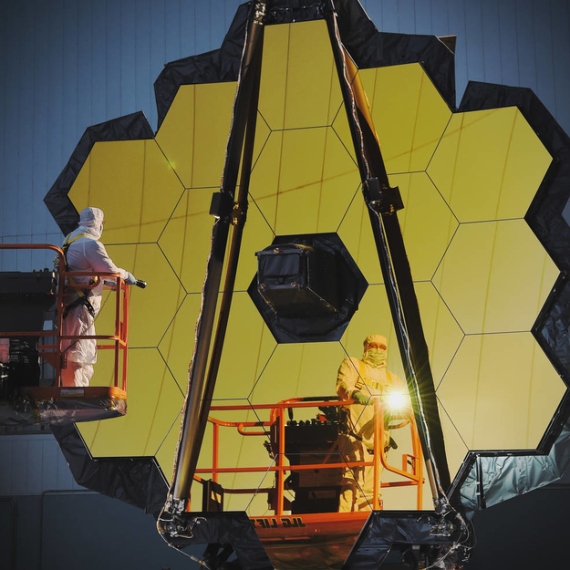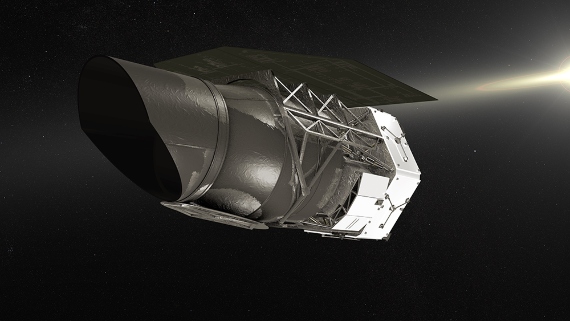The Hubble telescope has enjoyed three decades of solitary but intense life in space. It is the flagship of the Great Observatories program launched by NASA between 1990 and 2003, a lineage of telescopes that operate high above the Earth’s atmosphere, because space can be seen much better without its influence. Thanks to these telescopes we have been able to see the universe as never before. All have far exceeded the lifetimes for which they were designed… and astrophotography will have to depend on their successors to show us even more distant galaxies.

Floating in the vast silence of space, each at a specific distance from Earth, the four great observatories share the different frequencies of the electromagnetic spectrum: Hubble observes mainly visible and ultraviolet light; Chandra monitors X-rays; Spitzer detects infrared light and the Compton Observatory captured energetic gamma rays. Except for the Compton, which fell into the Pacific Ocean in 2000 in a controlled deorbit after one of its gyroscopes failed, the rest of that generation of venerable telescopes is still in operation, but they have all begun to show signs of their advanced age.
Chandra, which this year celebrates twenty years in space, and Hubble, which has surpassed 29 years, are now suffering their own problems with their gyroscopic systems and have spent periods of time disconnected (without the possibility of missions to repair them). NASA announced that on January 30, 2020 it will shut down Spitzer: with high maintenance costs and the fuel needed to cool some of its instruments exhausted since 2009, they have not found funding to keep it alive.

With these telescopes, the enormity, complexity and beauty of the universe have been observed to unimaginable limits. But in the face of an uncertain future and the health of Hubble and Chandra hanging in the balance, can astrophotography overcome these limits? Let’s have a look at the ongoing projects.
‘James Webb’: a plague of delays
The history of the James Webb space telescope has been plagued by delays and cost overruns. Destined to be the successor of Hubble, at the moment it resembles Hubble in its haphazard beginnings —which included a manned mission to fit it with the famous “glasses“— but its end is still uncertain. The three space agencies that have been working since 1996 on its construction —NASA, the European Space Agency (ESA) and the Canadian Space Agency— have appointed an independent evaluation board to review the status of the project and last year announced a new launch delay until March 30, 2021.
All the data surrounding James Webb is mind boggling. Its main observation area consists of 18 hexagonal mirrors covered with a thin layer of gold, which reflects infrared light extremely well. Once in orbit, the 18 mirrors will act as a single mirror 6.5 metres in diameter (compared to 2.4 metres for the Hubble mirror), which makes it the largest space telescope ever built. With these disproportionate dimensions, no rocket is capable of carrying it open, so it has been designed in 18 parts that will be folded up inside the rocket during launch and then unfolded once in orbit.

The planned orbit of James Webb is another of the almost impossible numbers. While Hubble orbits some 600 kilometres above Earth’s surface —which is why it has been repaired several times with manned missions— James Webb will be located at the so-called Lagrange point 2 —about 1.5 million kilometres from the Earth, orbiting the Sun. Therefore, since a manned repair mission is out of the question, its cameras and spectrographs will have to work perfectly during the decade of its planned deployment in space. What’s more, due to its relative proximity to the Sun, it needs a huge shield, the size of a tennis court, to maintain the very low temperature at which its instruments operate well: –233° C. This sunshield will also have to be folded up during launch and then carefully unfurled once it reaches its home in space.
And then there’s the budget issue. While initially it was estimated at one billion euros, it has already exceeded seven billion, more than half of NASA’s total astrophysics budget and, as delays occur, the cost increases. “The James Webb Space Telescope is the most ambitious and complex astronomical project ever built, and bringing it to life is a long, meticulous process. The wait will be a little longer now but the breakthrough science that it will enable is absolutely worth it,” said Günther Hasinger, ESA Director of Science.
From the details of the stars and planets that are forming in our Milky Way to the mysteries of the first galaxies forged at the dawn of the Universe, James Webb aims to tackle fundamental questions that would otherwise be difficult to address. The problem is that this project has no margin for error.
Hunting for exoplanets
The WFIRST (Wide-Field Infrared Survey Telescope) is a telescope designed by NASA to answer essential questions in the areas of dark energy, the search for exoplanets and infrared astrophysics (which gives us a much more complete idea of nearby galaxies and has discovered more distant objects such as quasars).
The telescope has a primary mirror 2.4 metres in diameter, the same size as Hubble’s, but its field of view is 100 times larger. WFIRST will have two instruments, the so-called wide-field instrument and the coronagraph instrument with which it will carry out a census of the exoplanets that inhabit the Milky Way. The launch date will be in the second half of 2020 and the mission will last five years.

Its biggest problem is the competition from the other large telescope project. Last March, the Trump administration left WFIRST without funding in the 2020 budget, claiming that James Webb is more advanced and has also devoured many millions of dollars. The measure, which was also taken the previous year, was later reversed by Congress and the same is expected to happen this year.
Comments on this publication